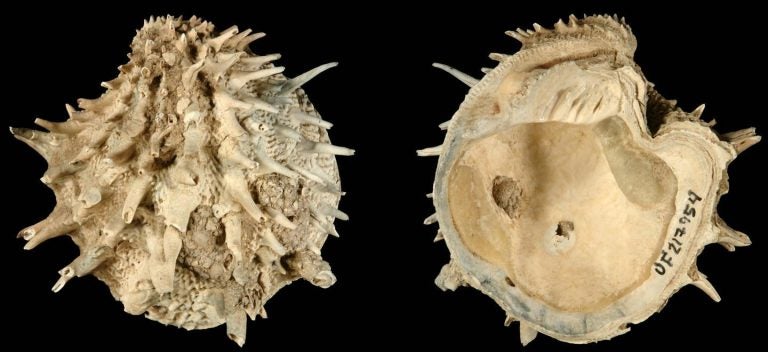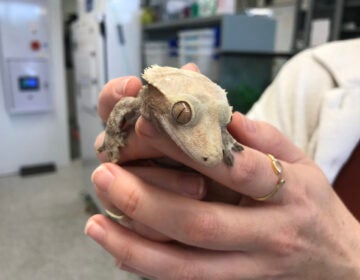Survival of the sluggish: Scientists find an upside to a low metabolism

Arcinella cornuta was included in a new study of fossil and extant bivalves and gastropods in the Atlantic Ocean. Researchers found that laziness might be a fruitful strategy for species survival. (Neogene Atlas of Ancient Life / University of Kansas)
New research suggests one effective evolutionary strategy: be lazy.
Species of mollusks that are now extinct had higher metabolic rates than the species that exist today, scientists announced in a paper published this week in Proceedings of the Royal Society B.
Metabolic rates are the amount of energy that organisms need to carry out their daily lives. Luke Strotz, a paleontologist and post-doctoral researcher at the University of Kansas who is lead author of the paper, says that a high basal metabolic rate has already been shown to lead to a higher likelihood of death at the individual level.
“But that that scales up to the level of the species is probably the big finding of this study,” he tells NPR. “That you can take something that’s happening at the level of all those individuals, scale it up to this level of the species, and see that at the species level higher metabolic rates actually has an influence on the likelihood of that species actually going extinct.”
Researchers looked at the metabolic rates of 299 species of mollusks that have lived since the mid-Pliocene era, a span of roughly 5 million years. They specifically analyzed bivalves (clams, mussels) and gastropods (snails, slugs).
How do you figure out the metabolic rate of an extinct scallop? In part by measuring its shell –and there are a lot of mollusk fossils out there, making them ideal for this project.
“Mollusks have extremely long fossil records,” says Strotz. “They go back almost to the beginnings of animal life.”
He says that previous research has shown that extinction is linked to things like how much area a species occupies, the size of a species’ population, or how connected the various populations of a species are to one another.
“We hadn’t really pinned down that there was a physiological component to the likelihood of extinction of a species” until this paper, Strotz says — though he cautions the results only consider mollusks.
He says he hopes to expand the team’s research to other types of animals, including vertebrates. Until then, alas, we can’t draw conclusions about the survival of certain couch-dwelling organisms.
9(MDAzMzI1ODY3MDEyMzkzOTE3NjIxNDg3MQ001))




